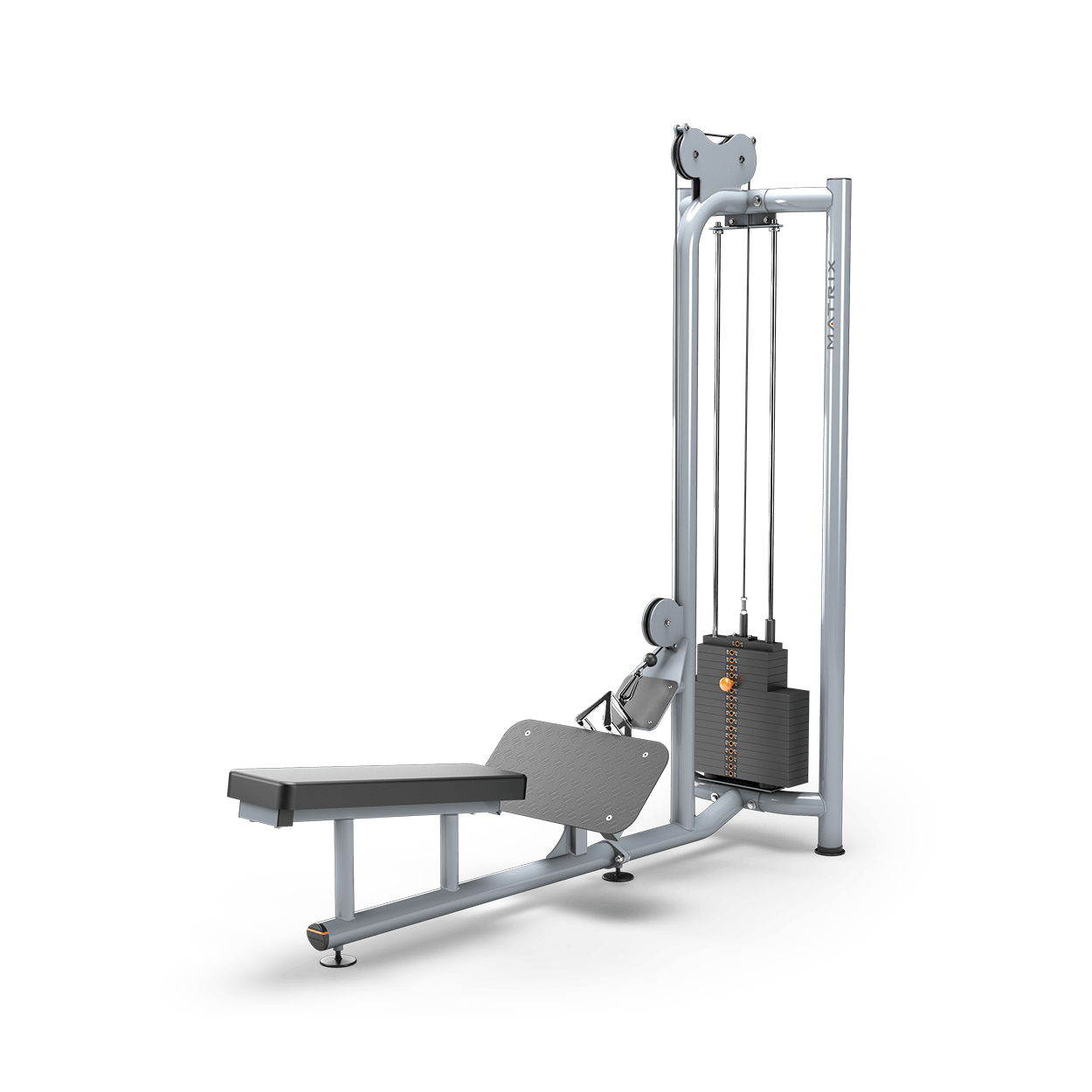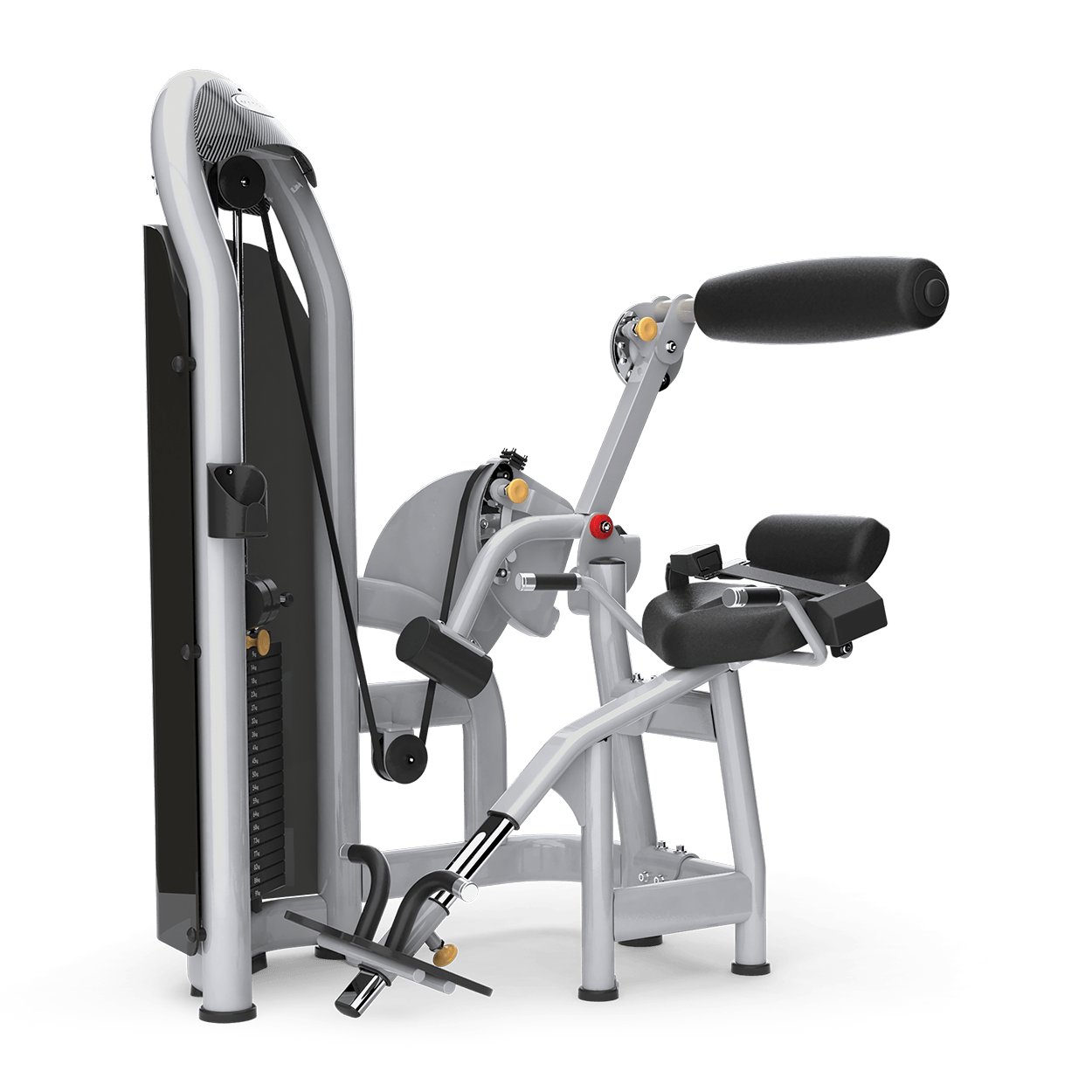 February’s “Equipment Spotlight” is a piece of resistance equipment called the “Smith Machine”. It is a plate loaded piece of equipment in which weight plates may be added to the bar on each side, much the same way as a regular barbell. The difference with the Smith machine bar is that the bar travels on two guide rods with safety hooks attached to each side of the bar. This gives the bar a stable path of movement with the ability to hook the bar safely at different heights.
February’s “Equipment Spotlight” is a piece of resistance equipment called the “Smith Machine”. It is a plate loaded piece of equipment in which weight plates may be added to the bar on each side, much the same way as a regular barbell. The difference with the Smith machine bar is that the bar travels on two guide rods with safety hooks attached to each side of the bar. This gives the bar a stable path of movement with the ability to hook the bar safely at different heights.
Unlike a regular Olympic Free Weight Bar which weighs 45 lbs. unloaded, the Smith Machine Bar weighs only 35 lbs. The Bar is counter-balanced with two weights suspended by cables within the sides of the piece to offset the weight of the bar.
When using this piece it is important to face the right direction to take advantage of the angling of the uprights. The image to the right shows the correct direction to face while using the Smith Machine. This allows you to not only take advantage of the angle of the rods but also allows you to see the safety hooks.
One plus to the Smith Machine is the stability and safety it provides users. Especially first-time weight trainers. The stability that the Smith Machine provides can also be a drawback, as the muscle stabilizers do not have to work as hard.
Overall the Smith Machine is a versatile piece of equipment that we can use to perform a variety of exercises. From Squats to Split Stance Squats, to Bench Press, Incline Press, Decline Press, Shoulder Press, Standing Rows, and Bent-Over-Rows just to name a few. We also can use the bar for bodyweight oriented exercises like Elevated Push-ups, Horizontal Rows, and Assisted Squats.
There are definite pluses and minuses to the Smith Machines use but as with most resistance pieces and exercises, the appropriate application is the key to getting the results that we seek.
If you would like to receive more information on how to use the Smith Machine please contact our Personal Training office. We would be glad to help you.












 Pull-ups and Dips have been Strength Training exercise staples for generations. Unfortunately for those of us that do not possess the requisite upper body strength to lift our body weight up it’s a near impossible task. Our Nautilus Gravitron Pull-up Dip machine is different than a standard pull-up or dip station in that its resistance plates provide the user with assistance rather than resistance.
Pull-ups and Dips have been Strength Training exercise staples for generations. Unfortunately for those of us that do not possess the requisite upper body strength to lift our body weight up it’s a near impossible task. Our Nautilus Gravitron Pull-up Dip machine is different than a standard pull-up or dip station in that its resistance plates provide the user with assistance rather than resistance.
 One of our newest pieces the Matrix Leg Press is one of BAC’s most versatile pieces of equipment.
One of our newest pieces the Matrix Leg Press is one of BAC’s most versatile pieces of equipment.


 One of the features of BAC’s new Downstairs Weight Training Space is a new Dumbbell Area!
One of the features of BAC’s new Downstairs Weight Training Space is a new Dumbbell Area!

 February’s “Equipment Spotlight” is a piece of resistance equipment called the “Smith Machine”. It is a plate loaded piece of equipment in which weight plates may be added to the bar on each side, much the same way as a regular barbell. The difference with the Smith machine bar is that the bar travels on two guide rods with safety hooks attached to each side of the bar. This gives the bar a stable path of movement with the ability to hook the bar safely at different heights.
February’s “Equipment Spotlight” is a piece of resistance equipment called the “Smith Machine”. It is a plate loaded piece of equipment in which weight plates may be added to the bar on each side, much the same way as a regular barbell. The difference with the Smith machine bar is that the bar travels on two guide rods with safety hooks attached to each side of the bar. This gives the bar a stable path of movement with the ability to hook the bar safely at different heights. A Kettlebell or in Russian “Girya” (ball or bell with a handle) was used over 350 years ago in Russia, as a certified handled counterweight for dry goods on market scales. Kettlebell lifting is the national sport of Russia with national championships held each year.
A Kettlebell or in Russian “Girya” (ball or bell with a handle) was used over 350 years ago in Russia, as a certified handled counterweight for dry goods on market scales. Kettlebell lifting is the national sport of Russia with national championships held each year.